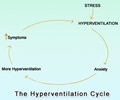“Rapid access” to minor stroke clinics takes twice as long as it should, suggests research published ahead of print in the Journal of Neurology Neurosurgery and Psychiatry.
A minor stroke or transient ischaemic attack (TIA) boosts the chances of sustaining a major stroke, particularly within the first few days, with some studies putting the chances as high as one in four.Early assessment is therefore important. And current UK guidelines recommend that all TIA patients should be assessed by a specialist within seven days of the start of symptoms.
The authors base their findings on 711 people who had sustained a TIA, and who were seen at five centres in the North West of England.
On average, they had had their TIA 15 days earlier, which is twice as long as the guidelines recommend.
Every patient was monitored for three months to check their risk of recurrent TIA, stroke, heart attack, or death. Just under one in five (126) patients had a major stroke or at least one further TIA during the monitoring period.
Of these, 30 people had a first stroke. And at least one further TIA occurred in 100 people, although only four of them then went on to have a major stroke.
Advertisement
The number of strokes was lower than expected, say the authors. But this is most likely because the delay in accessing services means that high risk patients would have already had a stroke.
Advertisement
The seven day standard is only achieved in just over a third of UK centres, they say.
“Our findings suggest that current provision of TIA services, where delayed presentation to “rapid access” TIA clinics is common, does not appear to provide an appropriate setting for urgent evaluation or timely secondary prevention in those who may be at the highest risk of stroke,” they conclude.
Source-BMJ
KAR/P











